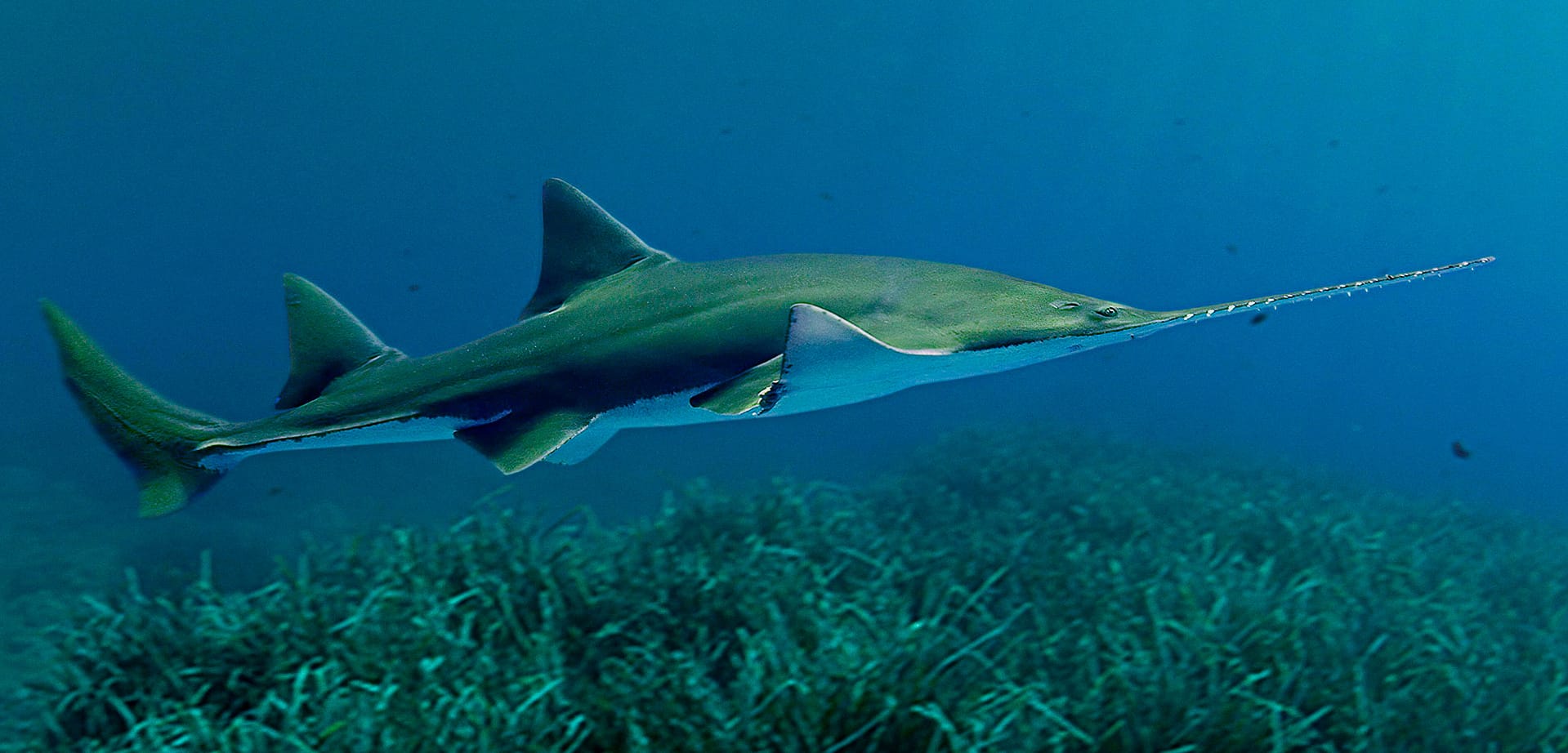The NOAA’s Office of Law Enforcement is looking into the death of an endangered smalltooth sawfish near Key West, Florida. Witnesses reported seeing the sawfish in distress and struggling in the water, eventually ending up stranded on a sandbar. When OLE officers and a U.S. Fish and Wildlife Service Refuge Officer arrived, they found the sawfish without its rostrum (saw).
This incident occurred on January 31, 2024, along a shallow flat oceanside of Geiger Key, near Key West. It is believed that the rostrum was removed between the evening of January 30 and the morning of January 31. NOAA is seeking information about the person(s) responsible for harming the sawfish or removing its rostrum.

NOAA Fisheries & Joyce Milelli came across this sick sawfish in late January while leading a tour near Geiger Key. Five days later it was found dead amid an outbreak of deaths among endangered sawfish.
A reward of up to $20,000 is being offered for information leading to a criminal conviction or the assessment of a civil penalty. You can provide information by calling the NOAA Enforcement Hotline at (800) 853-1964. Tips can be left anonymously, but for eligibility for the reward, include your name and contact information.
We are seeking information that could lead to the successful identification, prosecution, arrest, conviction, or civil penalty assessment for the person(s) responsible.
Smalltooth sawfish are endangered, and they are protected under the Endangered Species Act. Once abundant in the Southeast, they are now only found off the coast of Florida, particularly in southwest Florida where they give birth. Sawfish received federal protection as an endangered species in 2003. Under the Act, it is illegal to catch, harm, harass, or kill an endangered sawfish. It is also against the law to possess, sell, carry, or transport sawfish or any parts, including the rostrum. While some fishermen accidentally catch sawfish, they can follow guidelines to safely release them if caught incidentally.
In the past few weeks, over a dozen endangered sawfish were found dead in the Lower Keys, along with other fish like goliath grouper, tarpon, and stingrays. This unusual situation is part of a fish kill, where many species are either dead or behaving strangely.
Tests so far have ruled out problems with the water, like low oxygen or temperature issues. However, they did find higher levels of a toxic algae called ciguatera. This toxin is often found in fish that feed on reefs where the algae grows naturally. Eating these fish can be risky as the toxin can build up, causing symptoms like vomiting and damage to the nervous system, which can last for days or even years.

Interestingly, ciguatera usually doesn’t harm fish, so scientists are puzzled about what’s causing the issue in the Keys, especially affecting so many different species. The situation is rare and unusual, with some speculating that a hot summer might be a factor.
Biologists from organizations like the Bonefish Tarpon Trust noticed dead fish and strange behavior starting in early November. Most of these incidents occurred between Bow Channel, near Sugarloaf Key, and Key West. Fish that were initially seen behaving oddly at night started showing the same behavior during the day.
Reports increased, and by mid-December, organizations like BTT and the Lower Keys Guides Association started collecting fish for testing. In early January, scientists from Florida Gulf Coast University and the University of South Alabama, experts in algae toxicology, joined the effort to find out what’s causing the problem.
As of late January, investigations are ongoing, and experts are working to understand the cause behind the deaths and unusual behavior of various fish species in the Lower Keys.
“It was really windy, and I told my customers, ‘Whoa, there’s a big shark. We need to stay away because if it moves, that’s not good,'” she shared.
While passing by, the 11-foot sawfish didn’t move. Even though she had never seen one before, Milelli sensed something was wrong and came back after the tour. This time, the sawfish swam under her kayak and disappeared.
“It was like seeing a dinosaur come to life,” she said. “We were so happy. It was like coming back to life. It was the number one animal I’d wanted to see.”
Unfortunately, five days later, a colleague saw the sawfish stranded nearby, recorded a video, and it died hours later. When Milelli and wildlife officers checked the next day, someone had cut off its rostrum.
“It was really heartwrenching,” she said.
Over 13 dead endangered smalltooth sawfish have been found. These rays, similar to sharks, used to be seen from the Carolinas to Florida. But because of overfishing and losing their nurseries in estuaries and rivers, their numbers have dropped, and now they are mostly found in South Florida.
Reports of sick or dead fish also include more than two dozen other species, from big fish like tarpon, permit, goliath grouper, and stingray to smaller ones like needlefish and sardines.
